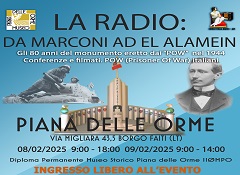Visegrad ARHAB Days and Visegrad Award
Written by Maciej Jakimiec SP2SGF - Project Coordinator
Monday, 22 April 2013 07:04

Visegrad ARHAB Days is the project aiming at the implementation of educational workshops connected with the launches of stratospheric balloons, with payloads containing amateur radio equipment and meteorological stations. During the missions, our team will carry out research on the propagation of radio waves in the upper layers of the atmosphere (through the troposphere up to the stratosphere). The planned flight altitude is about 30,000 m. Our capsule will be equipped with the systems necessary for video filming and HD photography. We will also explore the vertical distribution of temperatures and pressure from the moment of the launch to the balloon’s ceiling.
The launch will take place from Poland. Radio communication via a specially designed amateur-radio repeater will be available to amateur radio operators in Europe. Contacts with the selected stations of the Visegrad Group’s countries will be separately awarded. During the stratospheric flights, special-event amateur radio stations will be active from HA, OK, OM, and SP.
The Visegrad Amateur-Radio High-Altitude Balloon Days Award will be issued.
The Award Rules ( http://download.copernicus-project.org/Visegrad_Award_Rules_EN_version.pdf ) are available on the Project’s website http://nearspace.eu/. The Award artwork shows the photographs of deep space and the Earth’s curvature recorded during our stratospheric missions.
It will be possible to carry out amateur radio contacts via the repeater mounted in the balloon transponder, as well as HF/VHF contacts with the stations operating from HA, OK, OM, and SP. The operators completing successful QSO’s will be asked to fill out a short questionnaire (http://nearspace.eu) commenting on the propagation of radio waves in the stratosphere.
Monday, 22 April 2013 07:04

Visegrad ARHAB Days is the project aiming at the implementation of educational workshops connected with the launches of stratospheric balloons, with payloads containing amateur radio equipment and meteorological stations. During the missions, our team will carry out research on the propagation of radio waves in the upper layers of the atmosphere (through the troposphere up to the stratosphere). The planned flight altitude is about 30,000 m. Our capsule will be equipped with the systems necessary for video filming and HD photography. We will also explore the vertical distribution of temperatures and pressure from the moment of the launch to the balloon’s ceiling.
The launch will take place from Poland. Radio communication via a specially designed amateur-radio repeater will be available to amateur radio operators in Europe. Contacts with the selected stations of the Visegrad Group’s countries will be separately awarded. During the stratospheric flights, special-event amateur radio stations will be active from HA, OK, OM, and SP.
The Visegrad Amateur-Radio High-Altitude Balloon Days Award will be issued.
The Award Rules ( http://download.copernicus-project.org/Visegrad_Award_Rules_EN_version.pdf ) are available on the Project’s website http://nearspace.eu/. The Award artwork shows the photographs of deep space and the Earth’s curvature recorded during our stratospheric missions.
It will be possible to carry out amateur radio contacts via the repeater mounted in the balloon transponder, as well as HF/VHF contacts with the stations operating from HA, OK, OM, and SP. The operators completing successful QSO’s will be asked to fill out a short questionnaire (http://nearspace.eu) commenting on the propagation of radio waves in the stratosphere.



 . . . . . . . . . . .
. . . . . . . . . . . 







